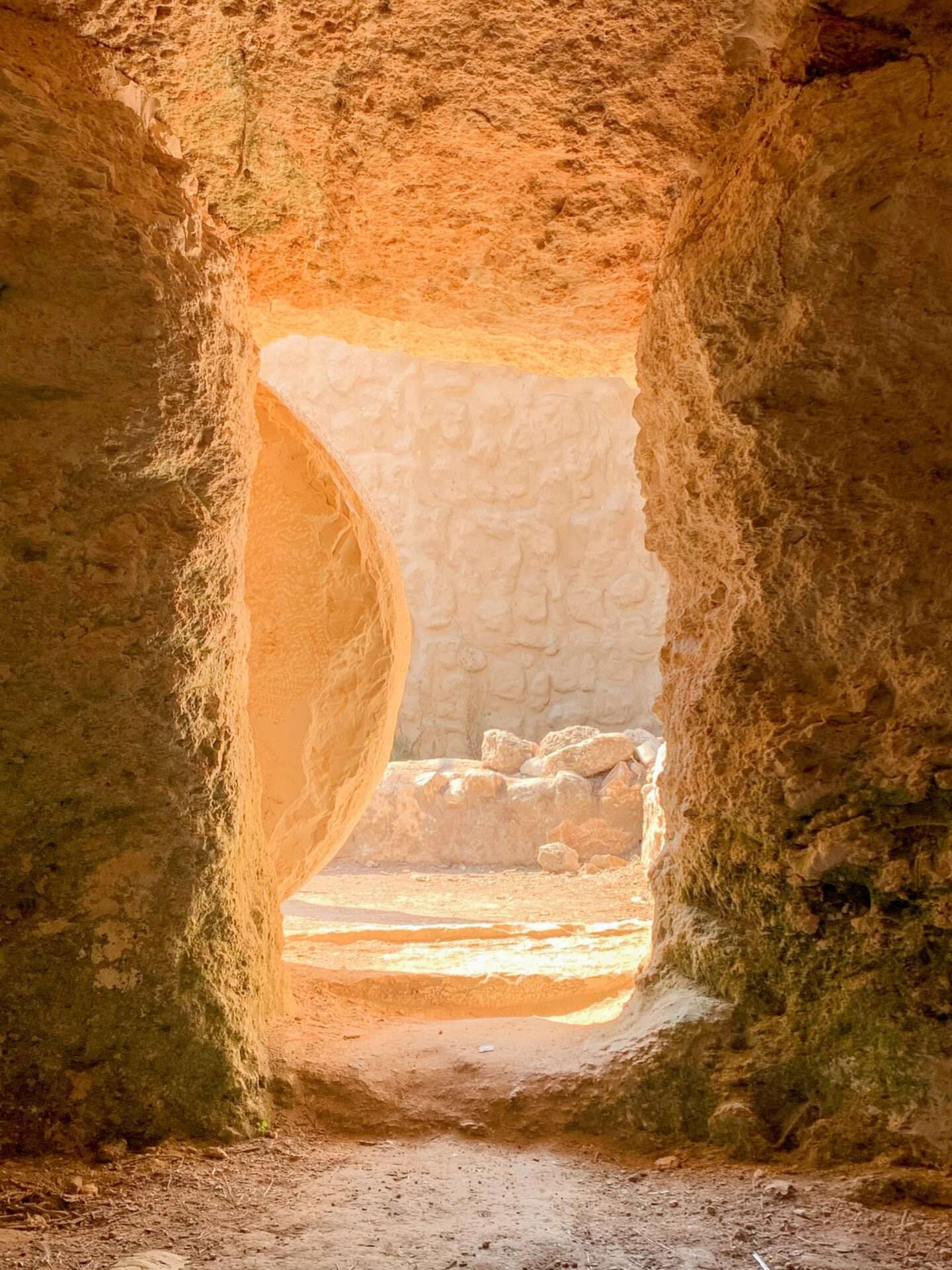I AM The Resurrection And The Life

8 minutes to read
Jesus said to her, “I am the resurrection and the life. Whoever believes in me, though he die, yet shall he live (John 11:25)
Most religious folks entertain some idea of life after death, as vague as the idea may be to them. But what will it take for people to believe that after their death, their decomposed body, indeed what has been turned to mere dust can be raised back to life as realistic as, and more splendid than their present life? It will take daring faith to grasp truths concerning Jesus who makes the claim, “I am the resurrection and the life.” Those who take Jesus to be that God Almighty, trustworthy enough to entrust their body and soul into His hands, can truly be confident of life after death. Such folks can even hope to live and share their lives together with those who have gone ahead of us.
The book of Hebrews says that man lives under the fear of death (Heb. 2:15). Nothing is as intimidating to mankind as death. The reason why death terrorizes us is because we do not know what lies ahead of it. If we could really believe that death is but a transition to a life with God; that death itself has been defeated by God’s Son Jesus Christ (Heb. 2:14), then death is not frightening to us at all.
Apostle Paul says, “absent from the body is present with the Lord” (2 Cor. 5:8). A Psalm that we typically read to comfort relatives and friends at funerals concludes this way: “In your presence there is fullness of Joy; at your right hand are pleasures forevermore” (Ps. 116:11). Indeed, what lies beyond death is sweet and attractive for a believer in Jesus, the God-Saviour.
Jesus is himself (“I am”) the resurrection and life. He does not merely dispense life to the dead; He is the one out of whom the resurrection life flows.
The “I am” Jesus
In the Gospel of John, Jesus makes several “I am” claims. Bible scholars explain to us that Jesus’ use of “I am” is identical to the use of Jehovah God of the Old Testament saying, “I am that I am” (Exo 3:14 cf. Isa 42:8). In John’s Gospel, most of the “I am” claims follow a predicate: “I am the light”; “I am the true vine”. One time Jesus said, “I am before Abraham” (8:58). This last one clearly points to Jesus being the God of Abraham as he said it; that Abraham by implication is alive thousands of years after his death, in some state of existence.
Most of the “I am” claims in John’s Gospel are also related to the “sign-miracles” he does. We see that Jesus is not only Jehovah God from the “I am” claims; we can also see that he is the Creator God in several of the miracles in John’s Gospel. For example, changing water into wine (Jn. 2) is a creation event. To instantly turn wine from grape juice, and that the best of its class, would be nothing short of a creative miracle. What Jesus did is nearly equal to creating something out of nothing. So is the case when Jesus raised Lazarus back to life.
Jesus’ claim about himself, “I am the resurrection and the life” is against the backdrop of the death of Lazarus, and just as Jesus was about to perform the climactic miracle in John’s Gospel, the resurrection of the dead, he proves that He is the same creator God (Jn. 1:3). Raising a dead body back to life is nothing short of a creative miracle. God who breathed life into man once again put life back into a dead body that has been in the grave for four days.
This miracle is a miniature portrayal of what I think will be the grandest day of history. Millions of people, who died throughout history, having had their hope in the power and purposes of God, would be resurrected one day and enter into a life with God. Would you believe it!
Belief in Resurrection
When Jesus told Martha, “Your brother will rise again” (11:23), Jesus was first affirming the established Jewish faith of a future resurrection according to the OT worldview. Two young people were brought back to life: first by Elijah (1 Kgs. 17:17-24), then by Elisha (2 Kgs. 4:8-16). The suffering Job made the declaration of faith, “after worms destroy this body, yet, in my flesh I shall see God” (Job 19:26, KJV). King David was assured of the “length of the day forever and ever” (Ps. 21:4). Daniel was told that “those who sleep in the dust of the ground will awake … to everlasting life” (Dan. 12:2). Only a scanty few atheist liberals among the Jews, the Sadducees, rejected eschatological resurrection. Jesus exposed the fallacy of their logic and their lack of faith in the power of God (see Matt. 22:23-33).
However, was Jesus telling something more when he promised, “your brother will rise again”? Jesus was not merely a teacher who affirmed the OT view of resurrection.
Love & Glory in Death
When Lazarus got real sick, his sisters had hoped that Jesus would come and heal him, so that they don’t lose their beloved brother to death. But Jesus comes four days after Lazarus’ death. But Jesus’ move, to let their brother die, was a move of love for his sisters, because their brother’s death and resurrection from it was going to demonstrate his glory to them (11:4).
That this purpose is precisely the point of the narrative is clear from its restatement at the end: “Did I not tell you that if you believed you will see the glory of God?” (v.40). According to John 1:14b, we were told by John that the revelation of Jesus’ glory proves He is the creator God (cf. 1:1-3). So, in raising Lazarus, Jesus was showing that He is the creator God who can give life to a dead corpse.
May we believe that “Jesus is the Christ” (God-Messiah) and may we receive by faith, that “abundant life” which he promises.
The Twofold Assertion
This “I am” claim is unique in that it makes a twofold assertion: “I am the Resurrection and [I am] the life.” What is the significance of this? In one sense, both could be saying the same thing, i.e., resurrection is new life or divine life. But it appears that this twofold assertion conveys several realities against death. First, Jesus is himself (“I am”) the resurrection and life. He does not merely dispense life to the dead; He is the one out of whom the resurrection life flows.
Second, it conveys that the life he dispenses is presently available to those who believe, not just in the end times. What the OT saints awaited is right here, available right now.
Third, the following statement (vv.25b-26, notice the inversion of statements here) clarifies that believers in Jesus, even if were to die, will rise again and those that live cannot lose that divine life.
Have this Life
What is the point of this “I am” statement in its context and in the Gospel of John? It is intended to stir up our faith in who Jesus is (He is God, cf. 1:1-3, 14, 18) and that by faith we may receive eternal life (20:30-31). For those who grow up in Christian communities, believing Jesus to be God is no particular challenge. That is our Christian confession. For that matter, most Christians may affirm that there is a future resurrection. But like Martha, the mere knowledge of these does not guarantee that we have received this life. It requires a personal encounter with the saviour as God, both powerful enough and loving enough to give us that divine life that he alone can impart to us, both in the present life, and in the one to come.
May we believe that “Jesus is the Christ” (God-Messiah) and may we receive by faith, that “abundant life” which he promises. Jesus asks each one of us the same question: “Do you believe this”? Could we boldly assert what Martha did, even before Lazarus was raised up, “Yes, Lord, I believe…!”
Jesus had to himself die and rise again in order to make this new life available to us. Jesus “was delivered up (to death) for our trespasses, and raised up for our justification” (Rom. 4:25). When this is our faith, we too affirm with apostle Paul, “For I am convinced that neither death, nor life... will be able to separate us from the love of God, which is in Christ Jesus our Lord” (Rom. 8:38-39).




